
On the night of Apr 15/16, 2015, I observed the cataclysmic variable star CRTS CSS100707 J164950+035835 . It showed a nice sinusoidal light curve during my 3.5-hour observing run.
You can read (a little) more about this star at
The main setup was:
Notes from the night
Below is a graph showing the sky brightness as a function of time during the observing run. Note the clouds throughout.

Below is a graph showing the FWHM as a function of time during the observing run. I re-focused halfway through, which helped.

Here's a chart of the field of CRTS 1649, which is at
RA = 16:49:50.4 Dec = +03:58:35 (J2000)
The chart is about 12x12 arcminutes.
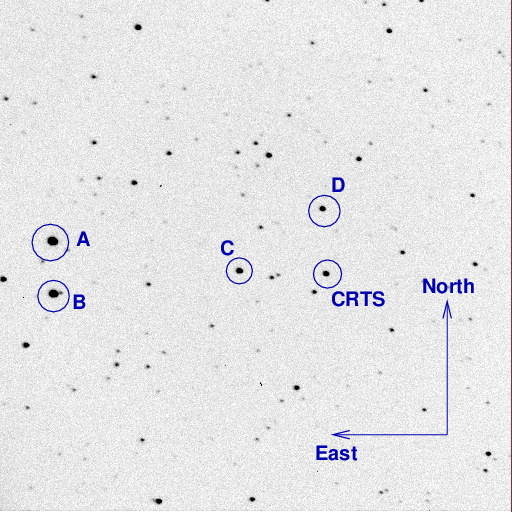
One of the reference stars marked above has photometry measured by the UCAC4. I used this star to convert the instrumental magnitudes to the V-band scale (though of course, they are unfiltered measurements)
A = UCAC4 471-057476 V = 11.565
The television camera on the finder scope shows the following when we're pointed at CRTS 1649. North up, East left, field about 1 degree on a side. The two pieces of tape in the central area show the location of the center of the CCD field, very roughly.
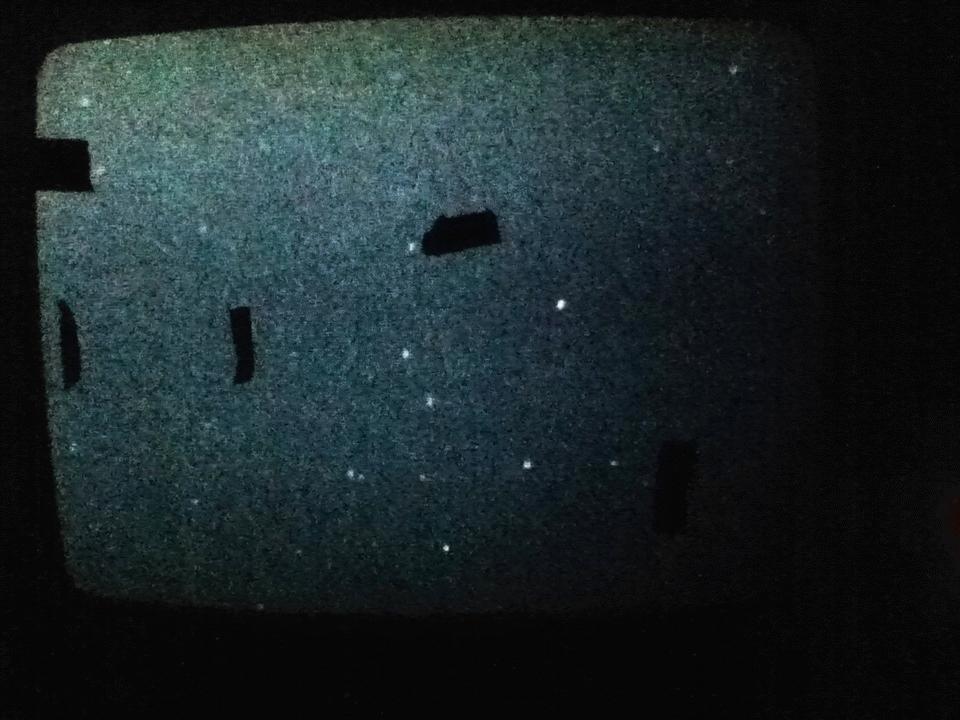
I used 30-second exposures during this observing run. The target had about 2000 counts/2 with this exposure time, and the bright stars A and B about 10,000 - 14,000.
The image adjustment factor graph shows clouds passing over several times.
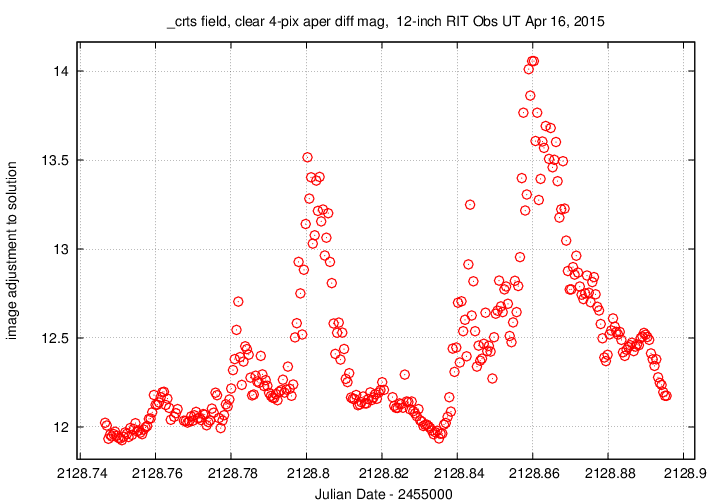
Using aperture photometry with a radius of 4 pixels (radius of 5.7 arcsec), I measured the instrumental magnitudes of a number of reference stars and the target. Following the procedures outlined by Kent Honeycutt's article on inhomogeneous ensemble photometry, I used all stars available in each image to define a reference frame, and measured each star against this frame. I used the UCAC4 V-band magnitude of star "B" to convert the ensemble instrumental magnitudes to a reported "V"-band magnitude (but remember, it's a clear filter).
Sigma-vs-mag plot: The target is the outlier at mag 2.3. The other two bright outliers are due to big cosmic rays landing on each star in one image.
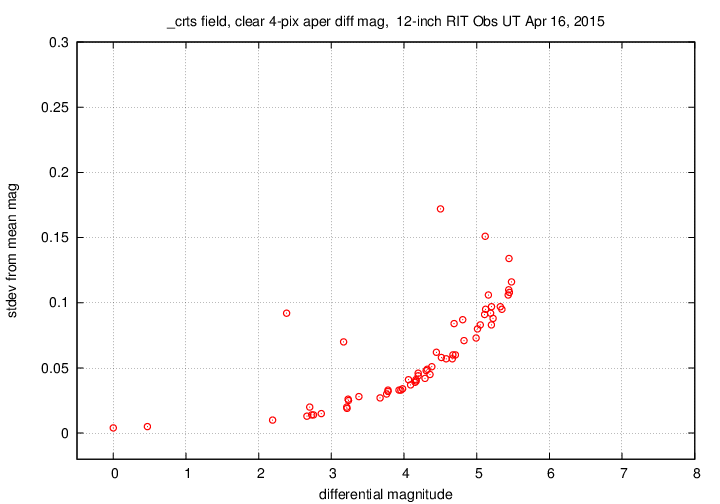
The target, shown in green, shows smooth variations with an amplitude of about 0.25 mag.
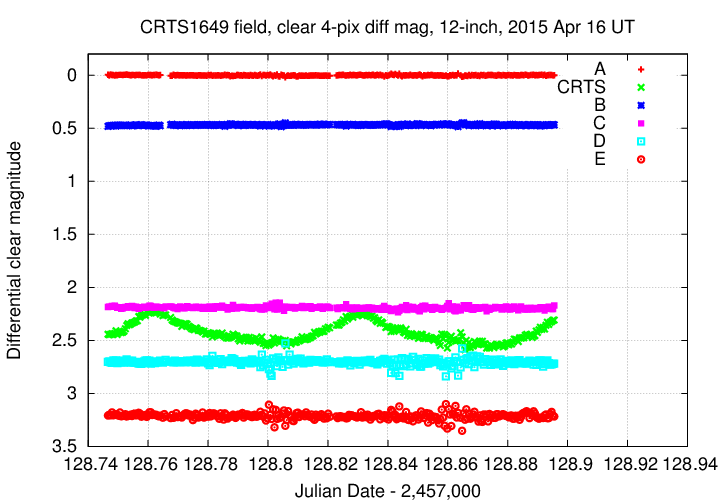
# Measurements of CRTSJ164950.1+035835 made at RIT Obs, Apr 16, 2014 UT, # in fair conditions, # by Michael Richmond, using 12-inch Meade and SBIG ST-9E CCD. # Exposures 30 seconds long, no filter. # Tabulated times are midexposure (FITS header time - half exposure length) # and accurate only to +/- 1 second (??). # 'mag' is a differential magnitude based on ensemble photometry # using a circular aperture of radius 5.6 arcseconds. # which has been shifted so UCAC4 471-057476 has mag=11.565 # which is its V-band mag according to UCAC4 # # UT_day JD HJD mag uncert Apr16.24660 2457128.74660 2457128.75030 13.538 0.014 Apr16.24705 2457128.74705 2457128.75075 13.543 0.014 Apr16.24749 2457128.74749 2457128.75119 13.539 0.014
Last modified 4/16/2015 by MWR.